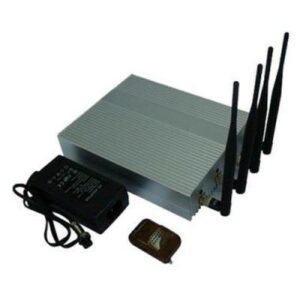In today’s digital age, understanding how to change router DNS settings is key to optimizing your internet experience. DNS acts as the internet’s phonebook, translating domain names into IP addresses. By tweaking your router’s DNS settings, you can unlock faster browsing speeds and bolster security.
Join us as we explore the importance of changing router DNS settings and provide practical guidance on how to do so effectively.
Let’s dive in and supercharge your online experience.
Understanding Router DNS Settings

- Compatible with major cable internet providers including Xfinity, Spectrum, Cox and more. NOT compatible...
- [Compatibility] 12V Power Supply Adapter Compatible with Netgear, Linksys, Asus,Motorola, Motorola/Arris...
Explanation of DNS settings on a router:
DNS settings on a router determine which DNS servers the router uses to resolve domain names into IP addresses. By default, routers typically use the DNS servers provided by the ISP.
However, users have the option to change these settings and use custom DNS servers for various reasons, such as improving performance, enhancing security, or increasing privacy.
Role of DNS servers in Internet connectivity:
DNS servers act as intermediaries between devices and the vast array of websites and online services on the internet. When a device sends a DNS query, the DNS server processes the request, looks up the corresponding IP address, and returns it to the device. This process is essential for establishing connections and accessing online content.
Difference between default and custom DNS servers:
Default DNS servers, provided by ISPs, are often reliable but may only sometimes offer optimal performance or prioritize user privacy. In contrast, custom DNS servers, such as those provided by third-party providers like Google DNS or Cloudflare DNS, offer additional features and benefits, including faster response times, enhanced security measures, and improved privacy protections.
Benefits of Changing Router DNS Settings
Improved Performance:
Changing the DNS settings on your router to use custom DNS servers can lead to improved performance and faster internet browsing speeds. Some third-party DNS providers offer optimized infrastructure and advanced caching mechanisms, resulting in quicker DNS resolution times.
By reducing the time it takes to translate domain names into IP addresses, you experience shorter loading times for websites and online services, enhancing overall browsing efficiency.
Enhanced Security:
Another significant benefit of changing router DNS settings is enhanced security. While default DNS servers provided by ISPs may offer basic security features, custom DNS servers often provide additional layers of protection against various online threats, such as malware, phishing attacks, and DNS spoofing.
Third-party DNS providers may implement advanced security measures, such as DNSSEC (Domain Name System Security Extensions) and malware blocking, to safeguard users’ devices and data from malicious activities.
By using custom DNS servers with robust security features, you can mitigate the risk of cyber threats and protect your online privacy more effectively.
Reasons to Change Router DNS Settings
Privacy Concerns:
Privacy-conscious users may choose to change their router’s DNS settings to address concerns about data privacy and online tracking. Default DNS servers provided by ISPs may log DNS queries and track user activity for various purposes, potentially compromising user privacy.
In contrast, some third-party DNS providers prioritize user privacy and adhere to strict data protection policies. By using custom DNS servers that do not log user activity or retain personally identifiable information, users can maintain greater anonymity and privacy while browsing the internet.
Geographic Restrictions and Content Filtering:
Changing router DNS settings can also help bypass geographic restrictions and content filtering imposed by ISPs or governments. In some regions, ISPs may block access to certain websites or online services based on geographic location or regulatory requirements.
By using custom DNS servers located in different regions or countries, users can circumvent these restrictions and access blocked content more easily.
Additionally, some third-party DNS providers offer content filtering options that allow users to block specific types of content, such as adult content or malicious websites, at the DNS level, providing an extra layer of control over internet access.
How to Change Router DNS Settings
Accessing the Router Configuration Interface:
- Open a web browser on a device connected to your home network.
- Enter the router’s IP address into the address bar and press Enter. (The router’s IP address is typically printed on the router itself or provided in the router’s documentation.)
- Log in to the router’s administration interface using your username and password. (If you haven’t changed the default credentials, refer to the router’s documentation for the default login credentials.)
Navigating to DNS Settings:
- Once logged in to the router’s administration interface, navigate to the network settings or DNS settings section. The exact location of these settings may vary depending on the router model and firmware.
- Look for options related to DNS server settings, often labeled as “DNS,” “Internet,” or “WAN” settings.
Configuring Custom DNS Servers:
- Locate the fields for the primary DNS server and secondary DNS server.
- Enter the IP addresses of the custom DNS servers you wish to use. You can use public DNS servers provided by third-party DNS providers such as Google DNS, Cloudflare DNS, or OpenDNS.
- Save your changes and restart the router if necessary to apply the new DNS settings.
Troubleshooting and Verifying DNS Settings
Verifying DNS Configuration:
- After changing the DNS settings on your router, it’s essential to verify that the changes have been applied successfully.
- You can verify the DNS configuration by accessing the router’s status or diagnostic pages, which typically display the current network settings, including DNS server information.
Troubleshooting Common Issues:
- If you encounter any issues after changing the DNS settings, such as slow browsing speeds or DNS resolution failures, double-check the DNS server configuration on your router to ensure that you entered the correct IP addresses.
- Additionally, consider testing alternative DNS servers or reverting to the default DNS settings provided by your ISP to troubleshoot performance or connectivity issues.
Conclusion
Changing your router’s DNS settings can have a significant impact on your internet browsing experience, offering benefits such as enhanced performance, improved security, and increased privacy. By configuring custom DNS servers on your router, you can potentially enjoy faster website loading times, better protection against online threats, and greater control over your online privacy.
In this article, we’ve explored the process of changing router DNS settings, providing step-by-step instructions for accessing the router configuration interface, navigating to DNS settings, and configuring custom DNS servers. We’ve also discussed the importance of verifying DNS configuration and troubleshooting common issues that may arise after changing DNS settings.
As you consider changing your router’s DNS settings, it’s essential to weigh the potential benefits against any potential drawbacks and ensure that you select DNS servers that align with your specific needs and preferences. Whether you’re seeking faster internet speeds, enhanced security features, or improved privacy protections, custom DNS settings can help you tailor your internet browsing experience to suit your requirements.
Remember to regularly monitor DNS performance, stay informed about DNS-related threats, and keep your router firmware up to date to ensure optimal functionality. By taking these steps, you can make the most of your router’s DNS settings and enjoy a smoother, safer, and more secure browsing experience.
We hope you found this article informative and helpful in optimizing your internet browsing experience.





